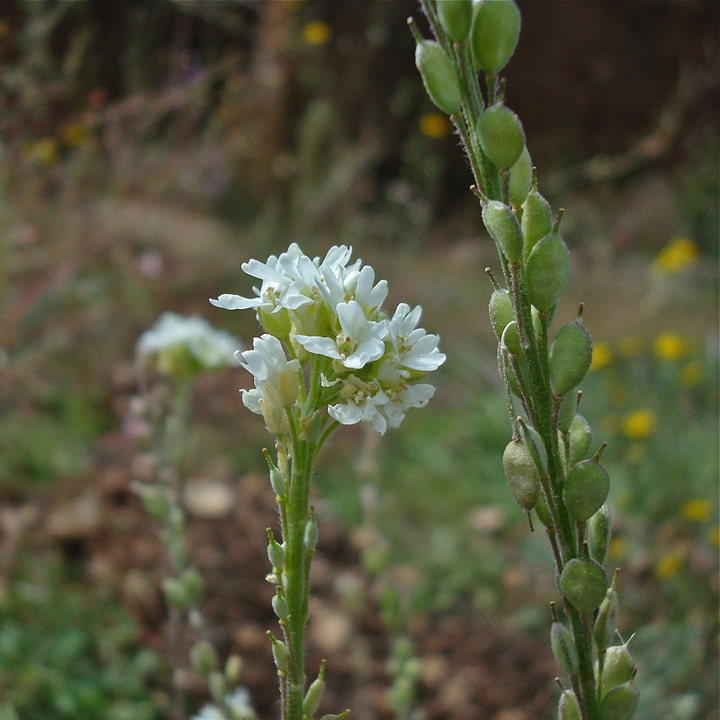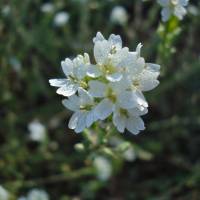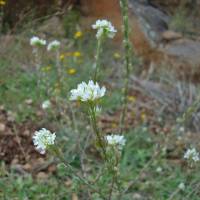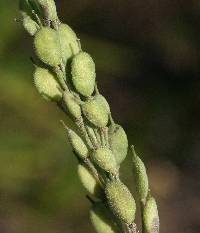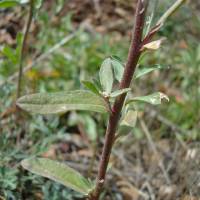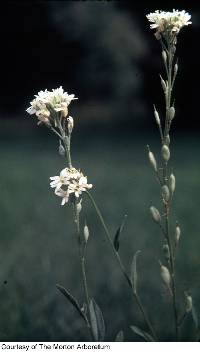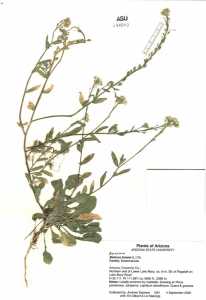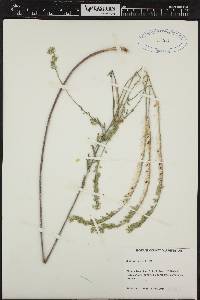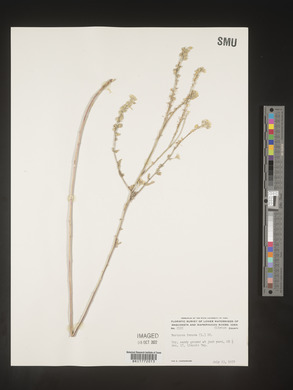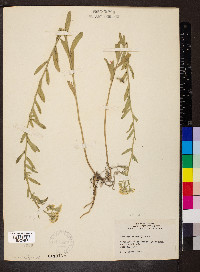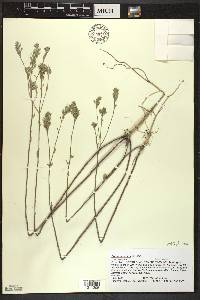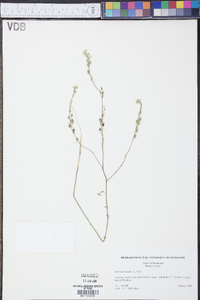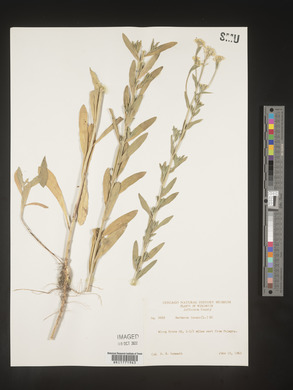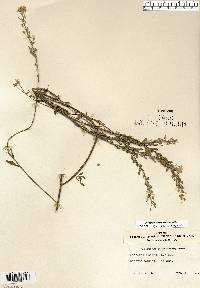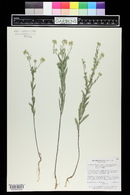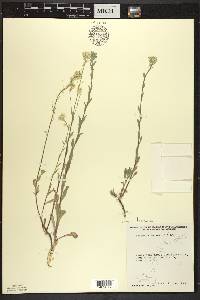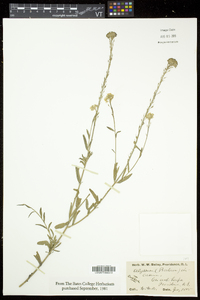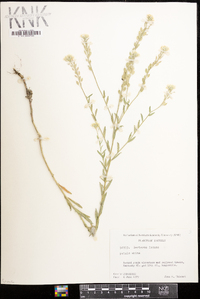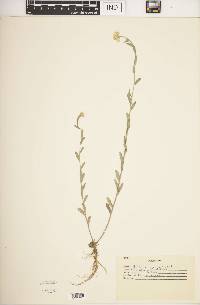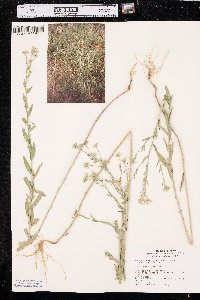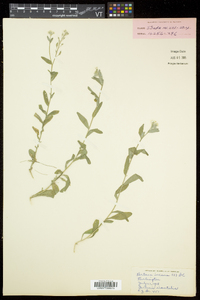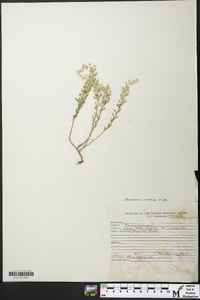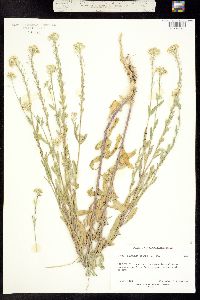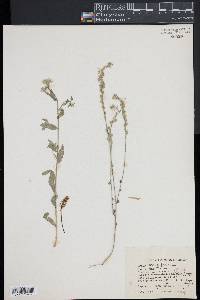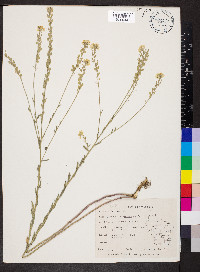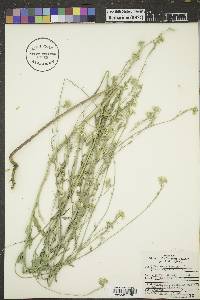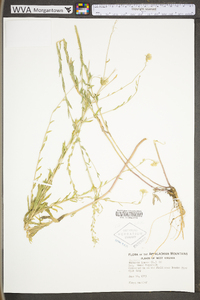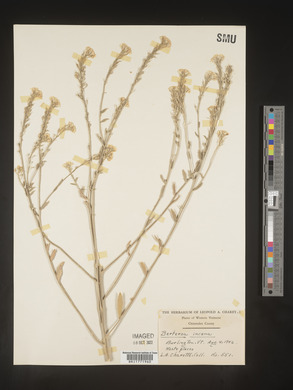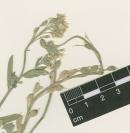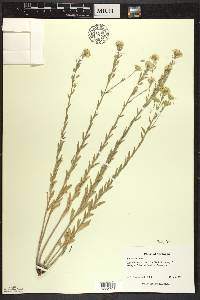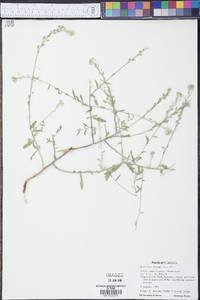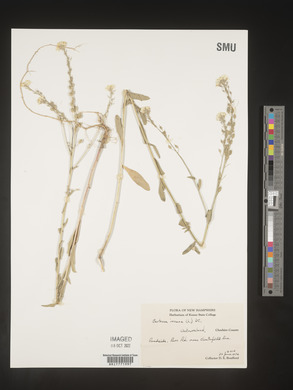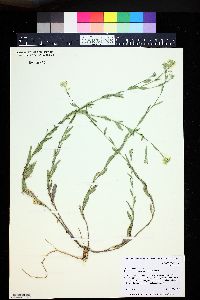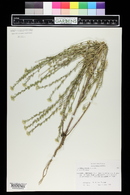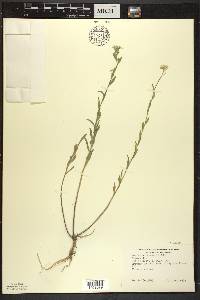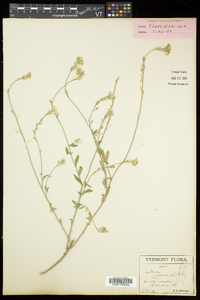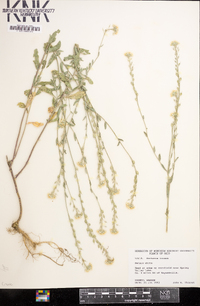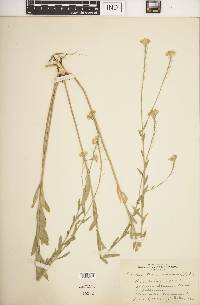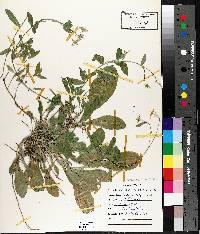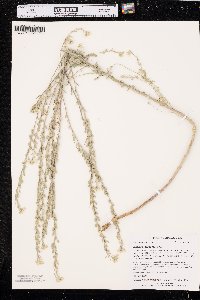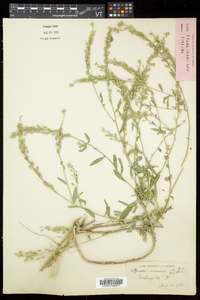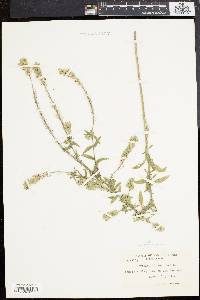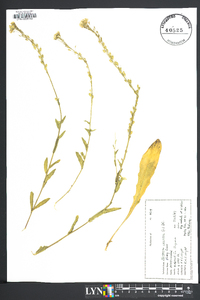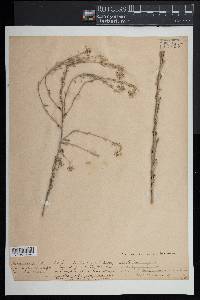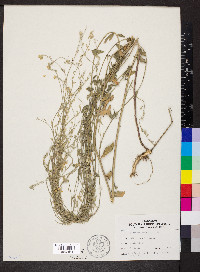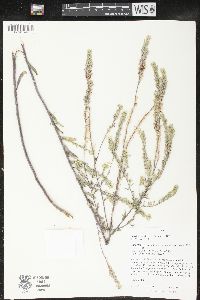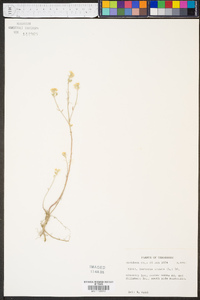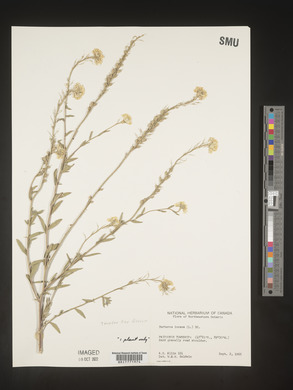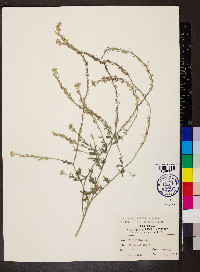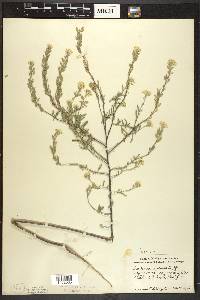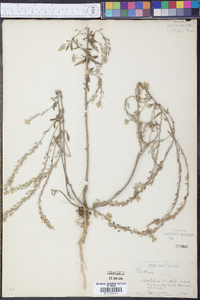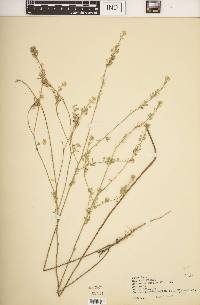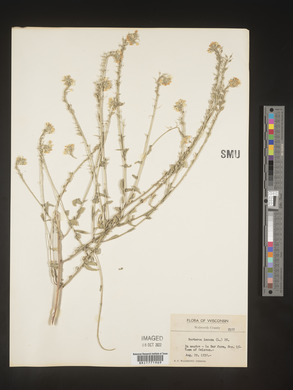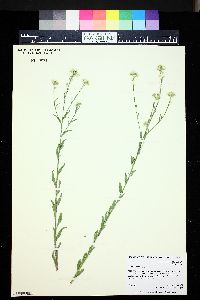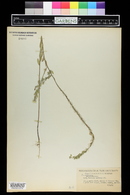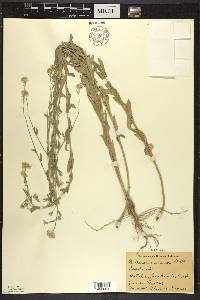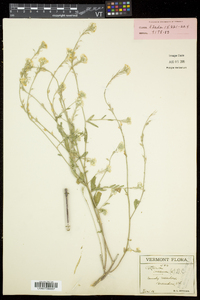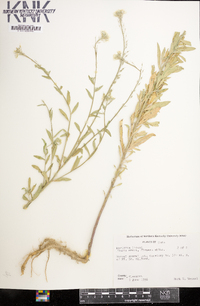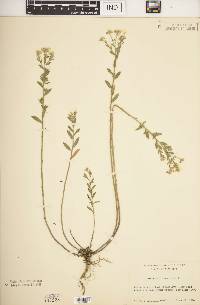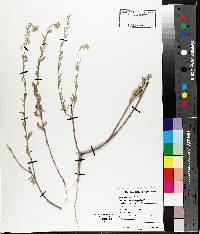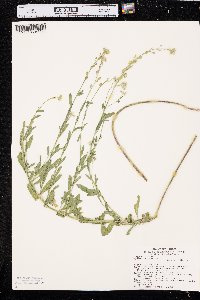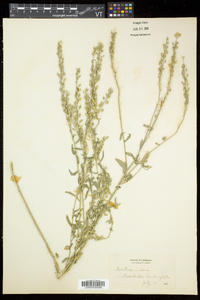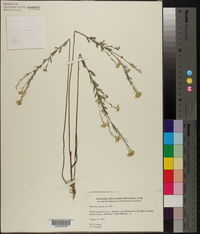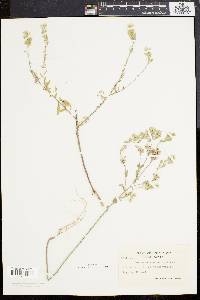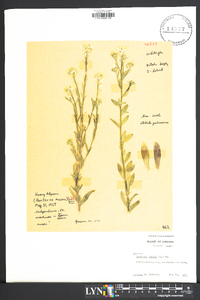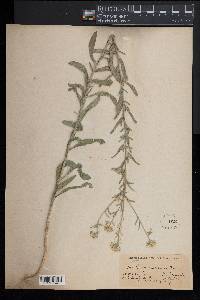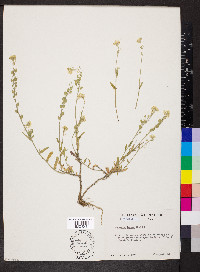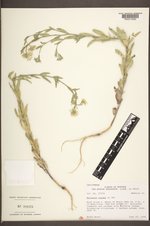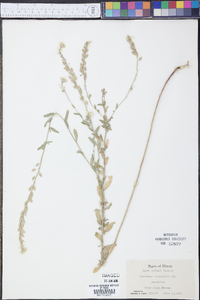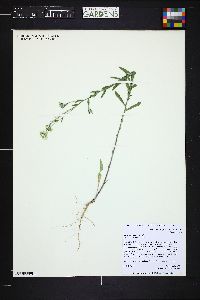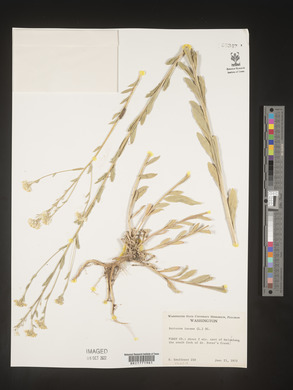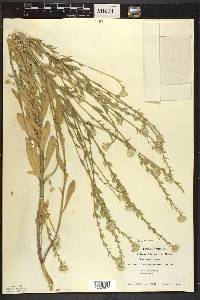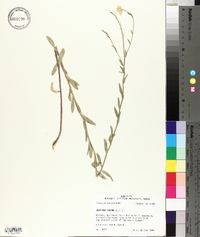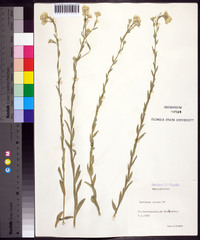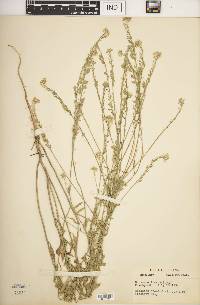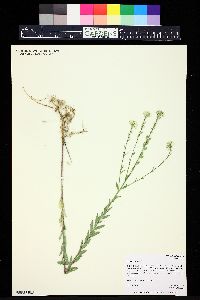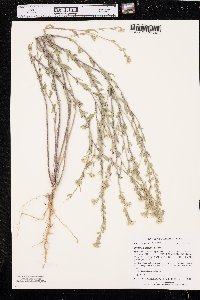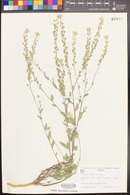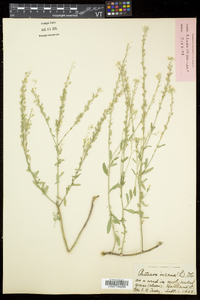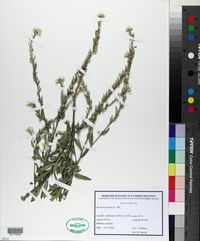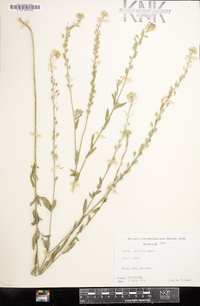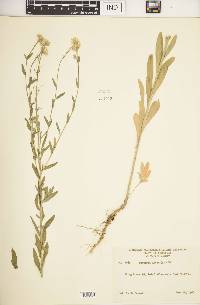Berteroa incana
|
|
|
|
Family: Brassicaceae
Hoary False Madwort, more...hoary alyssum, hoary false alyssum
[Alyssum incanum L., moreFarsetia incana (L.) W.T.Aiton] |
Plants densely pubescent, trichomes appressed, stellate mixed with simple ones. Stems simple or few from base, (2-)3-8(-11) dm. Basal leaves (withered by flowering) : blade oblanceolate, (2.5-)3.5-8(-10) cm, base cuneate or attenuate, apex obtuse. Cauline leaves: blade apex acute or obtuse. Fruiting pedicels appressed to rachis, (4-)5-9(-12) mm. Flowers: sepals 2-2.5 mm; petals narrowly obcordate, (4-)5-6.5(-8) mm (lobes oblong, (1-)1.5-3 × 0.5-1.5 mm); filaments white, median pair 2-3.3 mm, lateral pair 0.3-1 mm; anthers 0.5-1 mm. Fruits (4-)5-8.5(-10) × (2-)2.5-4 mm; valves obtuse at both ends, trichomes sometimes with unequal rays; style 1-4 mm, sparsely pubescent basally. Seeds slightly flattened, narrowly margined, 1-2.3 mm diam. 2n = 16. Flowering May-Sep. Flood plains, meadows, waste places, railroad embankments, woodlands, grasslands, roadsides, fields, stream banks, pastures, hillsides, forest floor; 0-2800 m; introduced; B.C., Man., N.B., Ont., Que., Sask.; Ariz., Calif., Colo., Conn., D.C., Idaho, Ill., Ind., Iowa, Kans., Maine, Mass., Mich., Minn., Mo., Mont., Nebr., Nev., N.H., N.J., N.Y., N.Dak., Ohio, Oreg., Pa., R.I., S.Dak., Utah, Vt., Va., Wash., W.Va., Wis., Wyo.; Europe; Asia. Annual or perennial herb to 0.7 m tall Stem: stiffly upright, usually branched above, covered with grayish, star-shaped hairs. Leaves: alternate, stalkless, 2 - 5 cm long, nearing 1 cm wide, reverse lance-shaped with a rounded to pointed tip, covered with grayish, star-shaped hairs. Flowers: in dense, rounded clusters, white, 5 - 7 mm long. Petals four, deeply two-lobed. Stamens six. Ovary green, densely hairy. Fruit: a thick pod, 5 - 8 mm long, 3 - 4 mm wide, elliptic, nearly round in cross-section, thinly hairy. Seeds three to six per chamber. Similar species: Berteroa incana is the only representative of the genus Berteroa in the Chicago Region. Its deeply lobed petals and grayish, star-shaped hairs are distinctive. Flowering: late May to late September Habitat and ecology: Introduced from Europe. A common weed of roadsides and fields. It also grows along railroad tracks. Occurence in the Chicago region: non-native Etymology: Berteroa refers to the Italian physician C.G.L. Bertero (1789-1831) who botanized in Guadeloupe and other West Indian islands. Incana means hoary; gray or silver colored. Author: The Morton Arboretum Stellate-canescent annual to perennial, stiffly erect, usually branched above, to 7 dm; lvs oblanceolate, (1-)2-5 cm, acute, entire; fls white, 3 mm wide; fr elliptic, plump, thinly hairy, 5-8 נ3-4 mm, convex over the whole surface; seeds 3-6 per locule; 2n=16. Native of Europe, established as a weed throughout much of our range, especially northward. Gleason, Henry A. & Cronquist, Arthur J. 1991. Manual of vascular plants of northeastern United States and adjacent Canada. lxxv + 910 pp. ©The New York Botanical Garden. All rights reserved. Used by permission. From Flora of Indiana (1940) by Charles C. Deam I have specimens of this weed from two places in Elkhart County and my notes say that in 1921 it was common in sandy soil along the roadside between Bristol and Elkhart. I have a specimen collected in 1920 about 2 miles northeast of Bristol and my notes say it was a common weed along the roadside and in an adjacent, fallow field. Hansen (Proc. Indiana Acad. Sci. 1923: 215. 1924) says the County Agricultural Agent reported it as a weed in a "run-down" farm in the same county. Hansen also reported a small colony in West Lafayette but it was intentionally destroyed before it seeded. In 1933 I found it in Steuben County and in 1934 I found it in La Porte County. This is a pernicious weed. ...... Indiana Coefficient of Conservatism: C = null, non-native Wetland Indicator Status: n/a |

